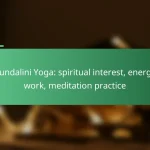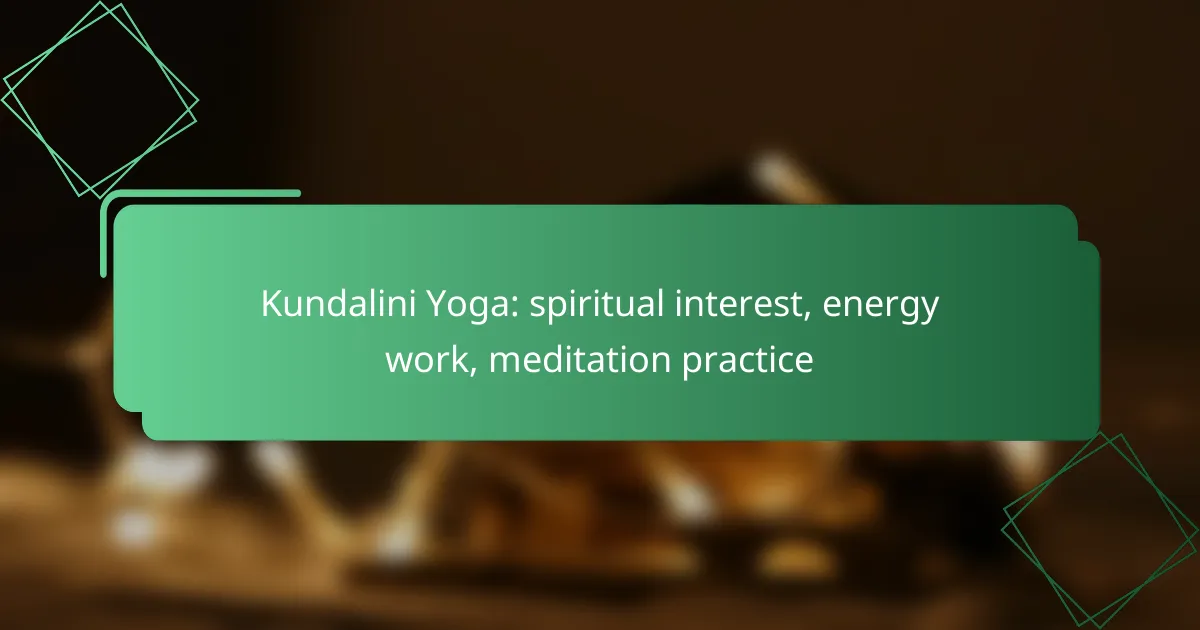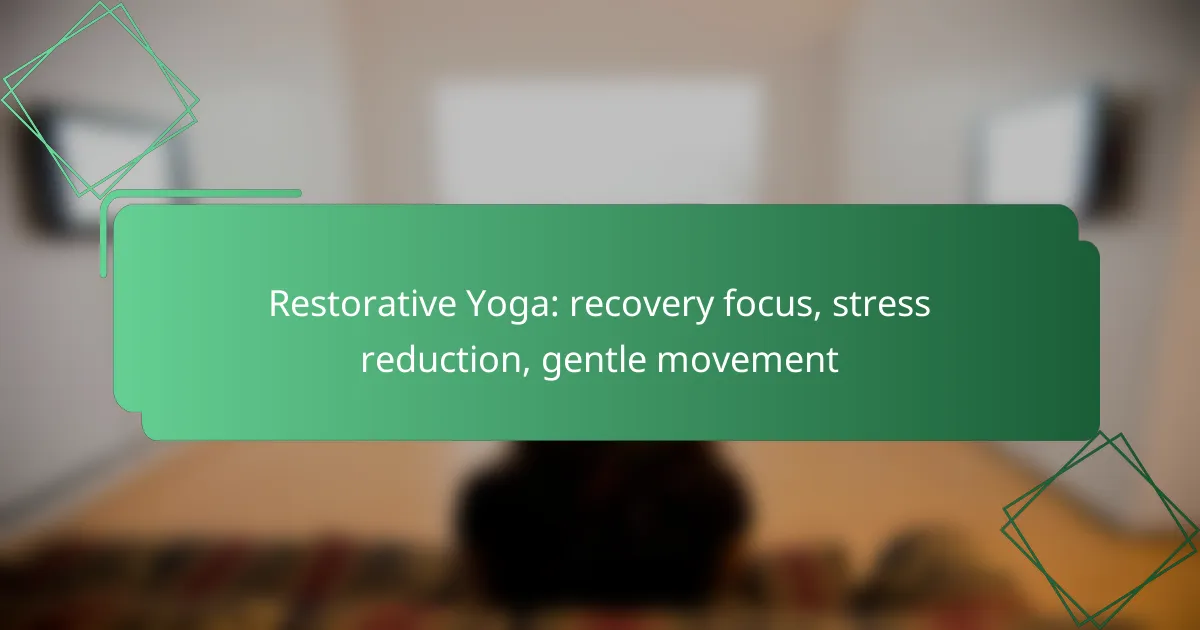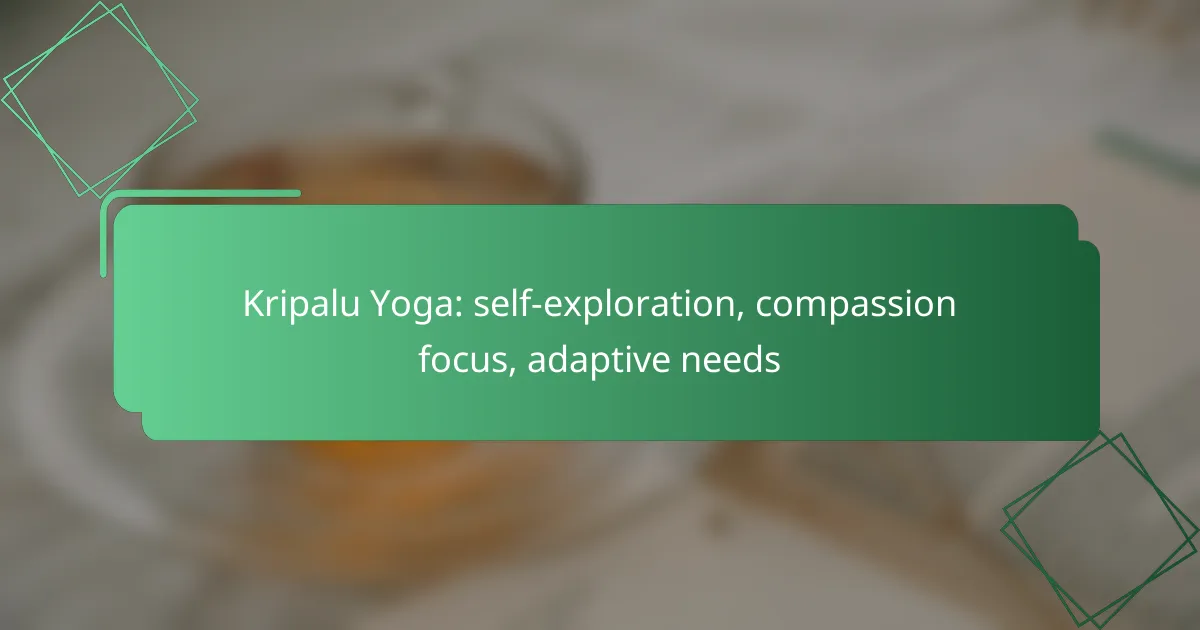Kundalini Yoga is a transformative practice that seeks to awaken the dormant energy within individuals, fostering a profound connection to their inner selves and the universe. By integrating physical postures, breath control, chanting, and meditation, it enhances spiritual awareness and promotes overall well-being, guiding practitioners on a journey of self-discovery and enlightenment.
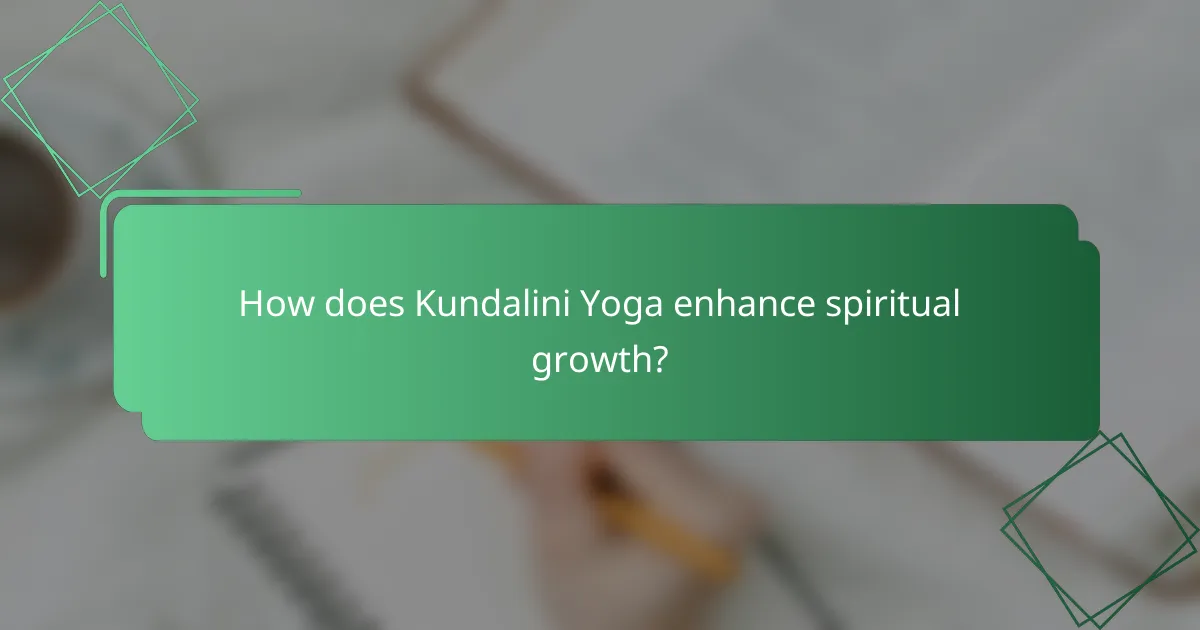
How does Kundalini Yoga enhance spiritual growth?
Kundalini Yoga enhances spiritual growth by awakening the dormant energy within individuals, facilitating a deeper connection to their inner selves and the universe. This practice combines physical postures, breath control, and meditation to foster self-discovery and spiritual enlightenment.
Increased self-awareness
Kundalini Yoga promotes increased self-awareness by encouraging practitioners to explore their thoughts, emotions, and physical sensations. Through various techniques, such as breathwork and mindful movement, individuals can gain insights into their behavior and motivations.
Regular practice helps in recognizing patterns and triggers, allowing for conscious choices rather than automatic reactions. This heightened awareness can lead to personal growth and transformation.
Deepened meditation practices
This form of yoga enhances meditation practices by integrating specific techniques designed to quiet the mind and deepen focus. Techniques such as mantra repetition and guided visualization are often employed to facilitate a more profound meditative state.
As practitioners engage in these methods, they may experience longer periods of stillness and clarity, which can significantly enrich their overall meditation experience.
Connection to higher consciousness
Kundalini Yoga fosters a connection to higher consciousness by awakening the Kundalini energy that resides at the base of the spine. This energy, when activated, can lead to profound spiritual experiences and insights.
Practitioners often report feelings of unity with the universe and a greater understanding of their purpose in life, which can be transformative and liberating.
Emotional healing
The practice of Kundalini Yoga can facilitate emotional healing by helping individuals process and release suppressed emotions. The combination of movement, breath, and meditation allows for the safe exploration of feelings that may have been buried.
Through this healing process, practitioners can experience reduced anxiety, improved mood, and a greater sense of emotional balance, contributing to overall well-being.
Community support
Kundalini Yoga often involves group practice, which fosters a sense of community and shared experience. Being part of a supportive group can enhance motivation and accountability, making it easier to maintain a consistent practice.
Additionally, sharing experiences and insights with others can provide encouragement and deepen the understanding of spiritual concepts, enriching the journey of each individual.
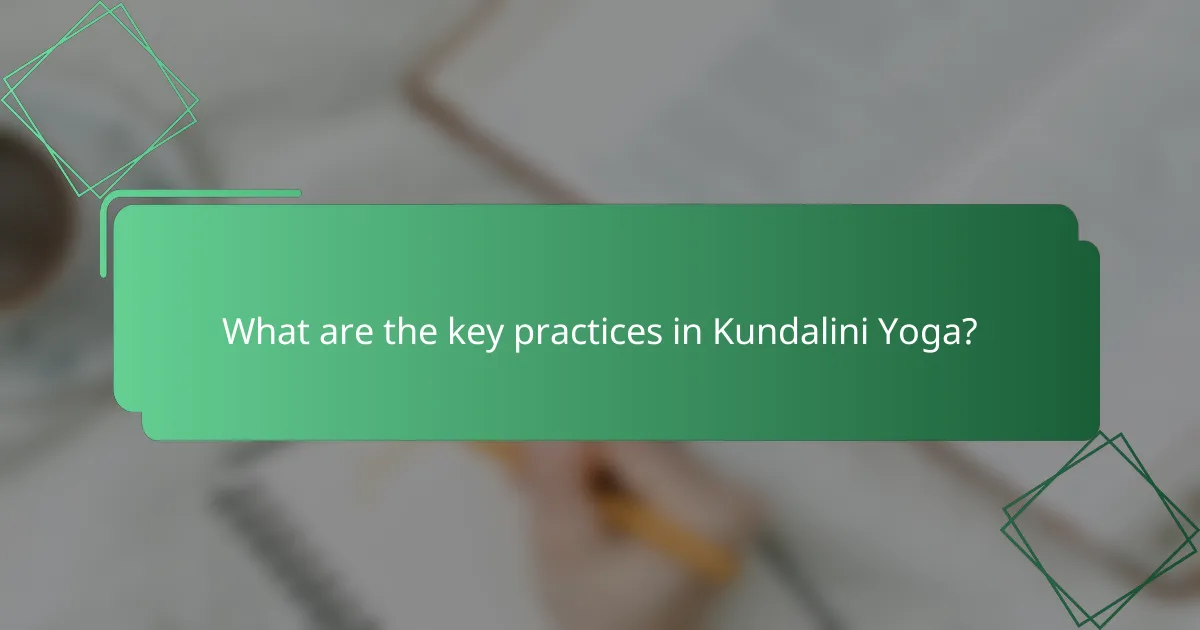
What are the key practices in Kundalini Yoga?
The key practices in Kundalini Yoga focus on awakening the Kundalini energy through a combination of physical postures, breath control, chanting, and meditation. These practices aim to enhance spiritual awareness, balance energy, and promote overall well-being.
Kriyas
Kriyas are specific sets of exercises and techniques designed to achieve particular outcomes in Kundalini Yoga. Each kriya typically includes a sequence of postures, breathwork, and sometimes meditation, all aimed at stimulating the energy centers in the body. Practitioners often perform kriyas for durations ranging from a few minutes to over an hour, depending on the desired effect.
When practicing kriyas, it’s essential to maintain focus and intention. Beginners should start with shorter kriyas and gradually increase the duration as they become more comfortable with the movements and breath control.
Pranayama techniques
Pranayama techniques involve various breathing exercises that help regulate the flow of prana, or life force energy, in the body. Techniques such as alternate nostril breathing (Nadi Shodhana) and breath of fire (Kapalabhati) are commonly used to enhance energy levels and mental clarity. Practicing pranayama can take as little as 5 to 15 minutes daily to experience noticeable benefits.
It’s crucial to practice pranayama in a calm environment and to listen to your body. Avoid forcing the breath, and if you feel lightheaded or uncomfortable, return to normal breathing.
Chanting mantras
Chanting mantras is a powerful practice in Kundalini Yoga that involves vocalizing specific sounds or phrases to elevate consciousness and connect with spiritual energy. Common mantras include “Sat Nam,” which means “truth is my identity,” and “Wahe Guru,” expressing joy and gratitude. Regular chanting can enhance focus and deepen meditation experiences.
To incorporate chanting into your practice, set aside a few minutes before or after your yoga session. You can chant aloud or silently, and using a mala (prayer beads) can help keep track of repetitions.
Meditation methods
Meditation methods in Kundalini Yoga are designed to quiet the mind and facilitate a deeper connection with the self. Techniques may include guided meditations, visualization, or focusing on specific energy centers (chakras). Sessions can last anywhere from 11 to 31 minutes, with longer durations often yielding more profound results.
To maximize the benefits of meditation, find a quiet space, sit comfortably, and maintain a consistent practice schedule. It’s helpful to set a timer to avoid distractions and to gradually increase your meditation duration as you become more accustomed to the practice.

How can I get started with Kundalini Yoga in the US?
To get started with Kundalini Yoga in the US, look for local classes, explore online resources, and consider recommendations for instructors. This practice combines physical postures, breath control, and meditation to awaken energy and promote spiritual growth.
Finding local classes
To find local Kundalini Yoga classes, check community centers, yoga studios, and wellness centers in your area. Many cities have dedicated Kundalini Yoga studios that offer a variety of classes for different skill levels.
Online platforms like Yoga Alliance or Meetup can help you discover classes nearby. Be sure to read reviews and check the instructor’s credentials to ensure a quality experience.
Online resources and courses
Numerous online platforms offer Kundalini Yoga courses, making it accessible from home. Websites like Gaia and Yoga International provide video classes and guided sessions that cater to various experience levels.
YouTube is also a valuable resource, with many instructors sharing free classes and tutorials. Look for channels dedicated to Kundalini Yoga to find structured practices that suit your needs.
Recommended instructors
When choosing a Kundalini Yoga instructor, consider those with recognized certifications, such as those from the Kundalini Research Institute. Instructors with a strong background in both yoga and meditation can provide a more enriching experience.
Some well-regarded instructors in the US include Gurmukh Kaur Khalsa and Snatam Kaur, known for their expertise and engaging teaching styles. Attending workshops or retreats led by these instructors can deepen your practice and understanding of Kundalini Yoga.
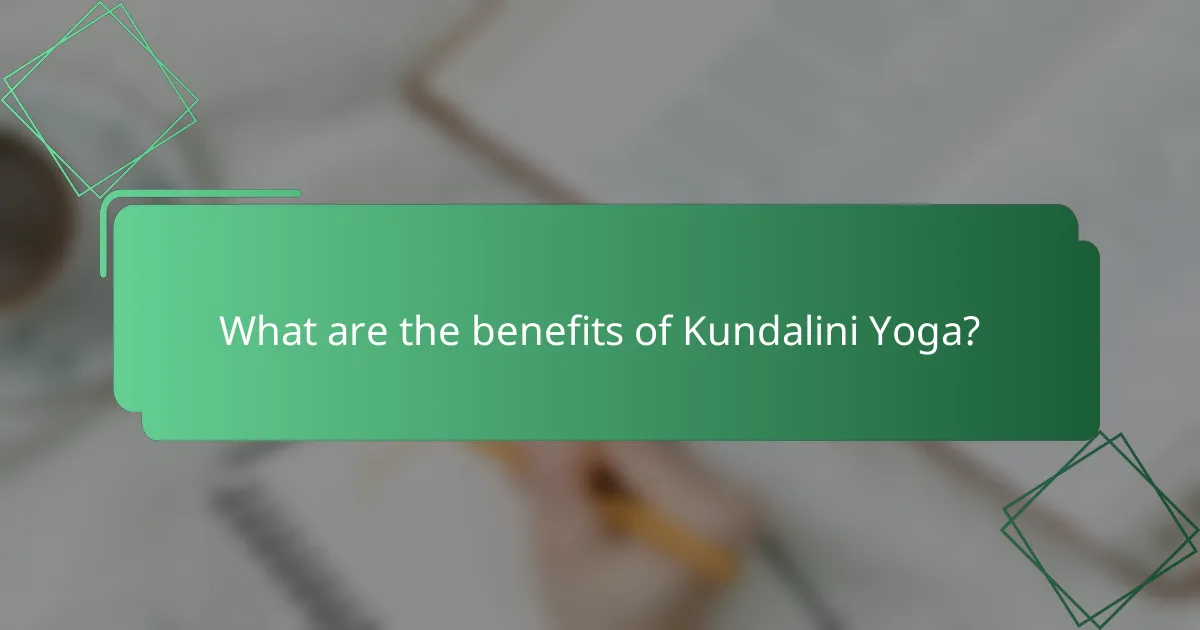
What are the benefits of Kundalini Yoga?
Kundalini Yoga offers numerous benefits, including improved physical health, enhanced mental clarity, reduced stress, and increased energy levels. This practice combines physical postures, breathing techniques, and meditation to awaken the dormant energy within, promoting overall well-being.
Physical health improvements
Kundalini Yoga can lead to various physical health improvements, such as increased flexibility, strength, and balance. Regular practice often helps in improving posture and alleviating chronic pain, particularly in the back and joints.
Additionally, it may enhance cardiovascular health by promoting better circulation and lowering blood pressure. Engaging in this practice can also support weight management by encouraging a more active lifestyle.
Mental clarity and focus
This form of yoga significantly enhances mental clarity and focus through its meditative aspects. Practitioners often report improved concentration and cognitive function, making it easier to tackle daily tasks and challenges.
By integrating breath control and mindfulness, Kundalini Yoga helps clear mental clutter, allowing for better decision-making and creativity. Regular sessions can sharpen your ability to stay present and engaged in the moment.
Stress reduction
Kundalini Yoga is particularly effective for stress reduction, as it combines physical movement with deep breathing and meditation. This holistic approach activates the relaxation response, helping to lower cortisol levels and promote a sense of calm.
Incorporating specific breathing techniques, known as pranayama, can further enhance relaxation and emotional resilience. Practicing consistently can lead to a more balanced emotional state and improved coping mechanisms in stressful situations.
Enhanced energy levels
Practitioners of Kundalini Yoga often experience enhanced energy levels due to the activation of Kundalini energy at the base of the spine. This energy is believed to rise through the chakras, revitalizing both the body and mind.
Incorporating dynamic movements and breathwork can stimulate the nervous system, leading to increased vitality and reduced fatigue. Regular practice can help maintain sustained energy throughout the day, making it easier to engage in daily activities.

What should I consider before starting Kundalini Yoga?
Before starting Kundalini Yoga, it’s essential to evaluate your physical health, personal goals, and readiness for a transformative practice. This form of yoga combines physical postures, breath control, and meditation, which can significantly impact your mental and spiritual well-being.
Health conditions and contraindications
Individuals with certain health conditions should approach Kundalini Yoga with caution. Those with cardiovascular issues, severe anxiety, or epilepsy may need to consult a healthcare professional before beginning. It’s crucial to listen to your body and avoid any practices that cause discomfort or strain.
Always inform your instructor about any pre-existing conditions. They can modify practices to ensure safety and effectiveness, helping you avoid potential risks associated with intense energy work.
Personal goals and intentions
Clarifying your personal goals and intentions is vital before engaging in Kundalini Yoga. Whether you seek spiritual growth, stress relief, or enhanced physical fitness, having a clear purpose can guide your practice and keep you motivated. Setting realistic and achievable goals will help you track your progress over time.
Consider writing down your intentions and revisiting them regularly. This practice can deepen your commitment and provide a framework for evaluating your experiences as you progress in your Kundalini journey.

